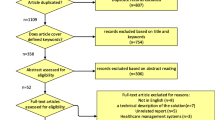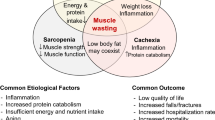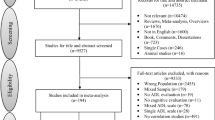Abstract
Purpose
Studies have demonstrated that chronic kidney disease (CKD) is significantly associated with the increased risk of functional difficulty in daily activity and mobility. However, data are less available for association between CKD and functional disability in Asians.
Methods
Using a data from Korea National Health and Nutrition Examination Survey III, we investigated the association of CKD with functional disability in 882 subjects over the age of 65. Disability was identified in activity of daily living (ADL), instrumental ADL (IADL), and visual, hearing, and walking function. The prevalence of disability was evaluated according to the stage of CKD, and multivariate logistic regression analysis was used to calculate the adjusted odds ratios (ORs) and 95% confidence interval (CI) [adjusted ORs (95% CI)] of CKD stage 3a for disability in ADL, IADL, visual, hearing, and walking function.
Results
Individuals with CKD stage 3–4 had the higher prevalence of disability ADL, IADL, visual, hearing, and walking function than individuals without CKD. CKD stage 3a was significantly associated with abnormal ADL [1.63 (1.04–2.54)] and visual impairment [1.39 (1.01–1.93)] even after adjusting for DM, hypertension, education, income, marital status, age, and sex.
Conclusion
The presence of mild CKD was significantly associated with disability in daily activity and multiple function.

Similar content being viewed by others
References
Rogers RG, Rogers A, Belanger A (1992) Disability- free life among the elderly in the United States. J Aging Health 4:19–42
Xie J, Matthews FE, Jagger C et al (2008) The oldest old in England and Wales: a descriptive analysis based on the MRC cognitive function and ageing study. Age Ageing 37:396–402
Brown GC (2015) Living too long: the current focus of medical research on increasing the quantity, rather than the quality, of life is damaging our health and harming the economy. EMBO Rep 16:137–141
Verbrugge LM, Jette AM (1994) The disablement process. Soc Sci Med 38:1–14
Grimby G, Finnstam J, Jette A (1998) On the application of the WHO handicap classification in rehabilitation. Scand J Rehab Med 20:93–98
Carey EC, Covinsky KE, Lui LY et al (2008) Prediction of mortality in community-living frail elderly people with long-term care needs. J Am Geriatr Soc 56:68–75
Covinsky KE, Palmer RM, Fortinsky RH et al (2003) Loss of independence in activities of daily living in older adults hospitalized with medical illnesses: increased vulnerability with age. J Am Geriatr Soc 51:451–458
Padilla J, Krasnoff J, Da Silva M et al (2008) Physical functioning in patients with chronic kidney disease. J Nephrol 21:550–559
Shlipak MG, Stehman-Breen C, Fried LF et al (2004) The presence of frailty in elderly persons with chronic renal insufficiency. Am J Kidney Dis 43:861–867
Wilhelm-Leen ER, Hall YN, Tamura MK et al (2009) Frailty and chronic kidney disease: the third national health and nutrition evaluation survey. Am J Med 122:664–671
Jassal SV, Karaboyas A, Comment LA et al (2016) Functional dependence and mortality in the international dialysis outcomes and practice patterns study (DOPPS). Am J Kidney Dis 67:283–292
Plantinga LC, Johansen K, Crews DC et al (2011) Association of CKD with disability in the United States. Am J Kidney Dis 57:212–227
Bowling CB, Sawyer P, Campbell RC et al (2011) Impact of chronic kidney disease on activities of daily living in community-dwelling older adults. J Gerontol A Biol Sci Med Sci 66:689–694
Kweon S, Kim Y, Jang MJ et al (2014) Data resource profile: the Korea National Health and Nutrition Examination Survey (KNHANES). Int J Epidemiol 43:69–77
Katz S, Downs TD, Cash HR et al (1970) Progress in development of the index of ADL. Gerontologist 10:20–30
Lawton MP, Brody EM (1969) Assessment of older people: self maintaining and instrumental activities of daily living. Gerontologist 9:179–186
Levey AS, Stevens LA, Schmid CH et al (2009) CKD-EPI (Chronic Kidney Disease Epidemiology Collaboration). A new equation to estimate glomerular filtration rate. Ann Intern Med 150:604–612
Yoshida D, Ninomiya T, Doi Y et al (2012) Prevalence and causes of functional disability in an elderly general population of Japanese: the Hisayama study. J Epidemiol 22:22–29
Viscogliosi G, De Nicola L, Vanuzzo D et al (2019) Mild to moderate chronic kidney disease and functional disability in community-dwelling older adults. The Cardiovascular risk profile in Renal patients of the Italian Health Examination Survey (CARHES) study. Arch Gerontol Geriatr 80:46–52
Lee SW, Kim YC, Se-Won Oh et al (2011) Trends in the prevalence of chronic kidney disease, other chronic diseases and health-related behaviors in an adult Korean population: data from the Korean National Health and Nutrition Examination Survey (KNHANES). Nephrol Dial Transplant 26:3975–3980
Ji E, Kim YS (2016) Prevalence of chronic kidney disease defined by using CKD-EPI equation and albumin-to-creatinine ratio in the Korean adult population. Korean J Intern Med 31:1120–1130
Boulware LE, Jaar BG, Tarver-Carr ME et al (2003) Screening for proteinuria in US adults: a cost-effectiveness analysis. JAMA 290:3101–3114
Funding
This study is supported by a Veterans Health Service Medical Center Research Grant, Republic of Korea (VHSMC18008).
Author information
Authors and Affiliations
Corresponding author
Ethics declarations
Conflict of interest
The authors declare that they have no conflict of interest.
Ethical standards
All protocols were approved by the Institutional review boards of hospitals involved in this study.
Informed consent
Informed consent was obtained from all participant in the study.
Additional information
Publisher's Note
Springer Nature remains neutral with regard to jurisdictional claims in published maps and institutional affiliations.
Rights and permissions
About this article
Cite this article
Park, S.K., Kim, W.J., Lee, S.Y. et al. Mild chronic kidney disease and its relation to functional disability in Korean elderly population. Int Urol Nephrol 52, 1929–1934 (2020). https://doi.org/10.1007/s11255-020-02559-y
Received:
Accepted:
Published:
Issue Date:
DOI: https://doi.org/10.1007/s11255-020-02559-y




